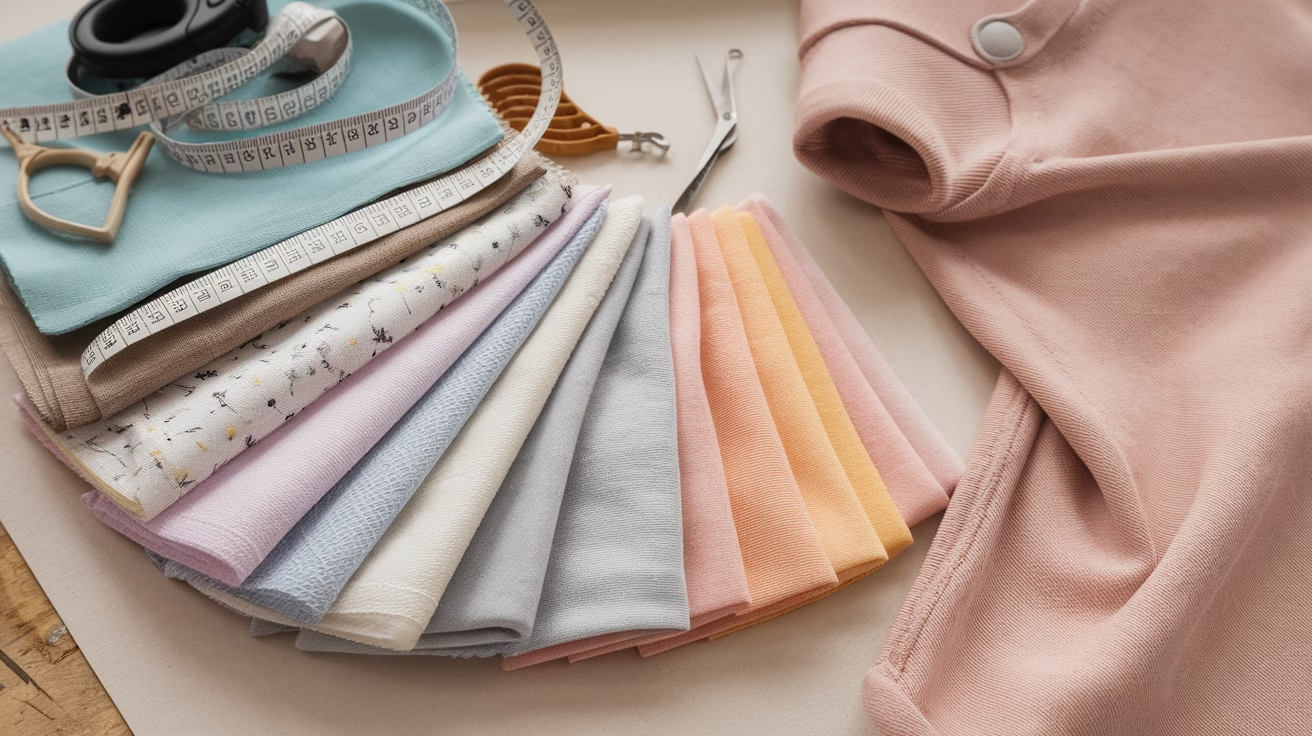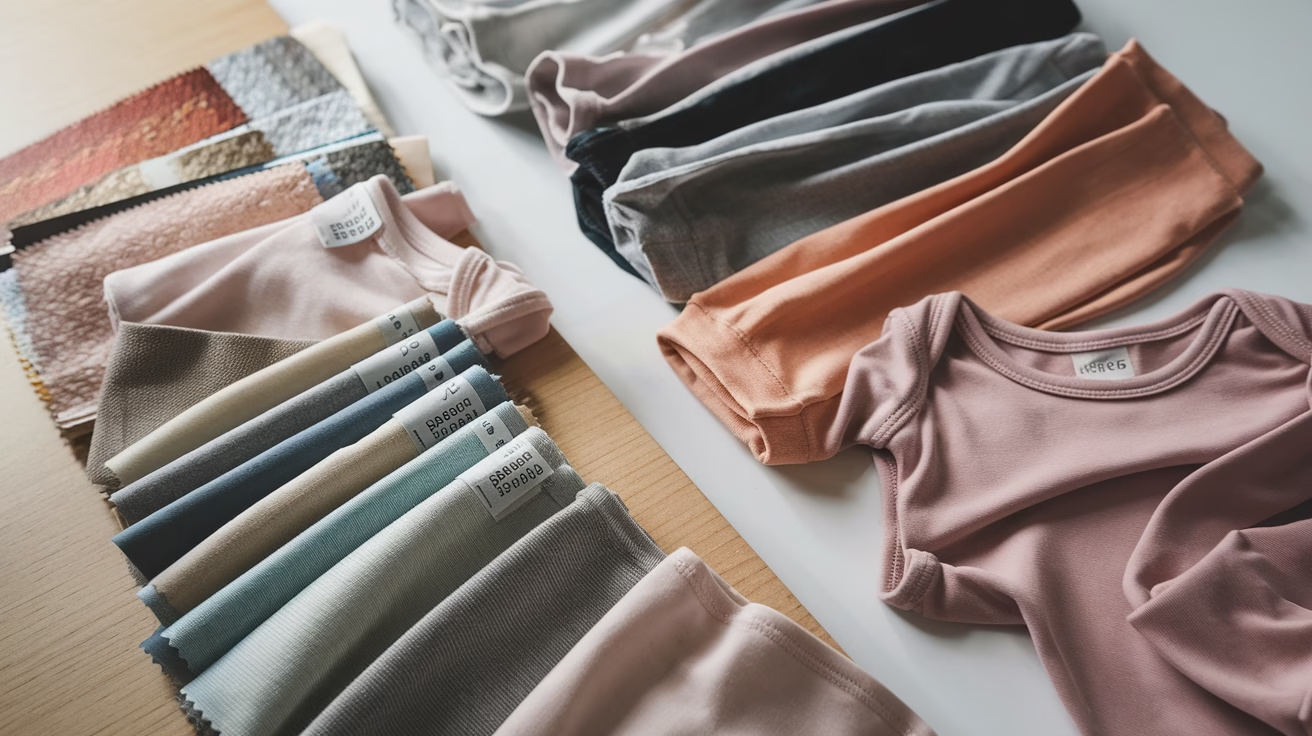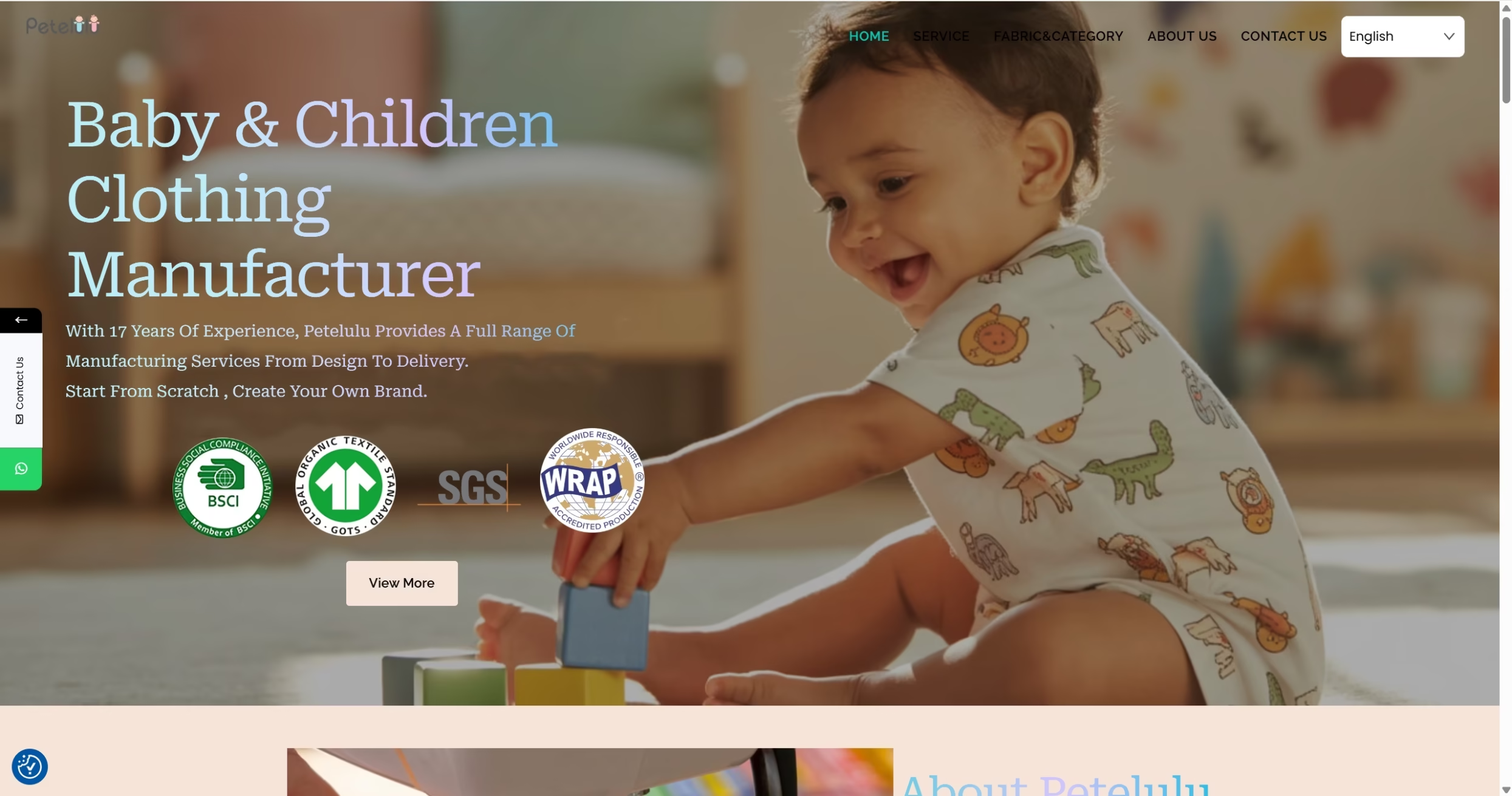5 Mistakes to Avoid When Starting a Children’s Clothing Line
Launching a children’s clothing line can be an exciting creative journey, but it’s also a path filled with potential pitfalls. While you might have amazing design ideas and a passion for children’s fashion, the hard truth is that execution is key in business. Many aspiring entrepreneurs dive in headfirst, only to discover that their dream quickly unravels due to preventable mistakes.
From skipping crucial market research to underestimating production requirements, these missteps can derail even the most promising clothing line before it truly begins. Parents are looking for safe, comfortable, and durable clothing that offers value for money—meeting these expectations requires more than just cute designs. In this article, we’ll explore the five critical mistakes that can sink your children’s clothing brand and provide practical guidance on how to navigate the complex world of kids’ fashion successfully. Whether you’re still in the planning phase or ready to launch, understanding these common errors could be the difference between a flourishing brand and a costly learning experience.
Skipping Market Research and Planning

Why research is critical for children’s clothing brands
Market research is the foundation of a successful children’s clothing line. The global kids apparel market, valued at approximately $213.16 billion in 2023, is projected to grow to $300 billion by 2035. Without proper research, you risk entering this competitive space blindly. Research helps you understand vital market dynamics, including:
-
Growing consumer preferences for sustainable and eco-friendly clothing (66% of parents prefer brands practicing sustainability)
-
Emerging trends like gender-neutral fashion, customizable apparel, and athleisure wear
-
Regional market differences (North America leads at $73 billion in 2024, followed by Europe and APAC)
-
The impact of social media platforms like Instagram and YouTube on purchasing decisions
Understanding these factors before launching helps position your brand strategically in a market growing at a CAGR of 2.89-5.35% (depending on the source).
How to conduct effective market research without breaking the bank
You don’t need expensive market research reports to gain valuable insights:
-
Analyze existing reports summaries – Industry publications often provide key highlights of major market research reports on children’s clothing
-
Monitor social media trends – Observe popular children’s clothing brands on Instagram and YouTube to understand influencer marketing strategies
-
Conduct targeted surveys – Gather feedback from parents about their purchasing preferences and pain points
-
Visit retail locations – Observe in-store displays, pricing strategies, and customer behavior
-
Study online reviews – Mine customer feedback on popular children’s clothing websites to identify unmet needs
Developing a comprehensive business plan that clarifies your brand identity
Your business plan should address key market opportunities identified through your research:
-
Market segmentation strategy – Decide whether to focus on apparel (73% of market share) or the faster-growing footwear segment
-
Distribution approach – Plan for both offline (currently 82% of market share) and online channels (growing at over 20% annually)
-
Sustainability positioning – Incorporate eco-friendly practices to appeal to the 66% of parents who prefer sustainable brands
-
Brand differentiation – Identify your unique selling proposition in a fragmented market where major players like Nike, Adidas, Carter’s, and H&M dominate
-
Financial projections – Map growth forecasts based on industry projections (5.3% CAGR through 2032)
A well-researched business plan serves as your roadmap, helping you avoid costly mistakes and identifying the most profitable opportunities in this $324.32 billion market.
Now that we understand the importance of thorough market research, let’s examine another common pitfall: Starting Too Big Instead of Finding Your Niche. This next section will explore how focusing on a specific market segment can set your children’s clothing line up for success.
Starting Too Big Instead of Finding Your Niche

Now that we’ve explored the crucial role of market research and planning, let’s examine another common pitfall: attempting to capture too large a market segment from the beginning. After establishing your foundation through research, the next challenge is defining exactly who you’re creating for.
The dangers of targeting too broad an audience
When launching a children’s clothing line, it’s tempting to create products for all ages, styles, and preferences. However, this approach can dilute your brand identity and stretch your resources too thin. The children’s apparel market is projected to reach $231 billion by 2024, making it appealing to target everyone—but this strategy often backfires.
Successful brands like Primary, Hanna Andersson, and Carter’s didn’t start by trying to serve everyone. Instead, they developed distinct identities: Primary focuses on gender-neutral clothing in vibrant colors, while Hanna Andersson emphasizes Scandinavian design principles and sustainability. Even Carter’s, now a market leader, uses sub-brands like OshKosh and Skip Hop to address different customer segments rather than trying to be everything to everyone under one label.
How to identify and focus on your specific market segment
Identifying your niche requires understanding both the decision-makers (parents) and the end-users (children). Consider factors such as:
-
Age ranges (newborn, toddler, school-age)
-
Aesthetic preferences (minimalist, colorful, themed)
-
Specific occasions (everyday wear, special events)
-
Geographic location and climate needs
-
Price points that match your target demographic
For example, Busy Bee Kids and Gunamuna found success by narrowing their focus rather than competing across the entire market. Your unique value proposition might involve sustainable materials, innovative designs, or addressing an underserved category within children’s fashion.
Strategies for gradual, sustainable growth in children’s fashion
After establishing your niche, plan for measured expansion:
-
Perfect your core offerings: Focus on excelling in your chosen segment before diversifying.
-
Listen to customer feedback: Let market response guide your expansion decisions.
-
Leverage digital platforms: Use omnichannel strategies to reach parents where they shop, from social media to popular marketplaces like Amazon and Nordstrom.
-
Form strategic partnerships: Consider collaborations with complementary brands or “momfluencers” who align with your values.
-
Enhance your content quality: Improve product information with videos and detailed visuals, which can increase sales by 15-58%.
Hanna Andersson provides an instructive example of sustainable growth—transitioning from physical stores to an online-only model as market conditions changed, while maintaining their core brand identity and values.
With a focused approach to your market segment established, we’ll next explore how neglecting safety and comfort in design can derail even the most promising children’s clothing line—essential considerations that must remain priorities regardless of your chosen niche.
Neglecting Safety and Comfort in Design

Neglecting Safety and Comfort in Design
Now that we’ve explored the pitfalls of starting too big instead of finding your niche, let’s turn our attention to another critical mistake that can derail your children’s clothing line: neglecting safety and comfort in design.
Essential safety standards and regulations for children’s clothing
When creating a children’s clothing line, compliance with safety standards isn’t optional—it’s mandatory. According to international standards, children’s garments must meet specific requirements to ensure attachment security for components like buttons and fasteners.
The EN 17394-2:2020 standard specifies testing methods for sewn-on buttons, toggle buttons, and tack buttons on children’s garments including gloves and hats. This ensures these components won’t detach easily and become choking hazards.
Similarly, CEN/TS 17394-3:2021 focuses on evaluating the security of metal mechanically applied press fasteners, while CEN/TS 17394-4:2021 addresses testing methods for other small components like labels and sequins that might not be testable using conventional methods.
For infants’ clothing specifically, CEN/TS 17394-1:2021 sets detailed specifications for small parts, though it excludes certain items like childcare products and footwear which are governed by separate standards.
Selecting appropriate materials and fabrics for different age groups
The choice of materials directly impacts both the safety and comfort of children’s clothing. When selecting fabrics, consider:
-
Durability after washing (as specified in CEN/TS 17394-4:2021)
-
Age-appropriate textures and weights
-
Breathability and skin sensitivity considerations
Components must remain securely attached even after repeated washing and wear, as emphasized in the reference standards. Testing services, such as those offered by SGS Global Softlines with their network of over 40 laboratories, can help ensure your materials and construction methods comply with international requirements.
Balancing trend-forward designs with practicality and durability
While staying on-trend is important in the children’s fashion industry, never compromise safety and comfort for style. Your designs should:
-
Meet all safety specifications while still appealing to your target market
-
Ensure all decorative elements (sequins, buttons) are securely attached
-
Consider how trendy elements interact with safety requirements
Remember that small components present particular risks for children, especially infants. The standards emphasize testing these elements for durability post-washing to prevent potential accidents.
With this focus on safety and comfort firmly established, we’ll next explore how rushing through the branding process can undermine even the safest, most comfortable children’s clothing line. A well-designed product needs equally thoughtful branding to succeed in the competitive children’s clothing market.
Rushing Through the Branding Process

Rushing Through the Branding Process
Now that we’ve covered the importance of safety and comfort in design, it’s equally critical to understand that branding isn’t something to be rushed. Many entrepreneurs are eager to launch their children’s clothing line quickly, but hastily developed branding can undermine even the most comfortable and well-designed products.
Creating a memorable brand name and compelling brand story
A strong children’s clothing brand begins with a distinctive name and a captivating story. Your brand story should communicate your values, whether that’s sustainability, affordability, or creating unique designs that help children express themselves. According to the reference material, defining a clear brand identity is essential for success in the competitive children’s fashion market. Take time to craft a narrative that resonates with both parents and children, explaining why your brand exists and what makes it special in the crowded children’s apparel landscape.
Developing visual identity elements that appeal to both parents and children
Visual elements such as logos, color schemes, and packaging need careful consideration as they must appeal to two distinct audiences: the children who will wear the clothes and the parents who make purchasing decisions. The reference content emphasizes selecting appropriate colors and patterns that resonate with your target demographic. Remember that your visual identity should reflect your brand values while being playful enough for children yet sophisticated enough to gain parents’ trust and approval. This delicate balance requires thoughtful design work rather than rushing to market with the first concept.
Building an effective online presence through websites and social media
In today’s digital marketplace, establishing a robust online presence is described as “non-negotiable” in the reference material. This includes creating a mobile-optimized e-commerce site that showcases your children’s clothing line effectively. Social media platforms offer opportunities to engage with your audience through content marketing and collaborations with influencers. A strategic launch marked by engaging storytelling can significantly enhance brand visibility. Many new business owners underestimate the time and resources needed to build this online presence, which is crucial for connecting with your target market.
With a solid branding foundation in place, you’ll be better prepared to tackle the next challenge that many children’s clothing entrepreneurs face: underestimating financial and production requirements. The costs associated with quality manufacturing, maintaining inventory, and implementing effective marketing strategies can quickly add up, making financial planning a critical component of your business strategy.
Underestimating Financial and Production Requirements

Underestimating Financial and Production Requirements
Now that we’ve discussed the dangers of rushing through the branding process, let’s examine another critical mistake that can derail your children’s clothing line before it even gets off the ground: underestimating what it truly costs to launch and maintain your business.
A. Realistic budgeting for manufacturing and marketing
The financial reality of starting a children’s clothing line varies widely, with startup costs ranging from as little as $1,000 to as much as $150,000. Most entrepreneurs fall somewhere in the middle, with median startup costs around $1,500. However, these figures can be misleading without breaking down the specific expenses involved.
Initial inventory typically requires between $5,000 and $30,000, depending on quality, materials, and sourcing methods. Marketing and branding—essential elements for standing out in the competitive kids’ apparel market—generally demand an initial investment of $2,000 to $10,000. Monthly operational costs like rent and utilities can add another $1,000 to $5,000 to your budget.
Other critical expenses include:
-
Business registration: $100-$500
-
Website development: $500-$5,000
-
E-commerce platform fees: $29-$299 monthly
-
Legal and licensing fees: $50-$400 annually
-
Legal consultations: $500-$3,000
Several successful founders have taken different approaches to funding. Jennifer Coulombe of Sat Nam babe launched through crowdfunding, raising approximately 70% of her needed capital. Meanwhile, Dahlia Rizk of Buckle Me Baby Coats leveraged social media virality and Kickstarter to generate initial orders.
B. The importance of tech packs and professional production guidance
For children’s clothing production specifically, detailed technical specifications are non-negotiable. Professional tech packs ensure your designs meet safety standards and manufacturing requirements. Without proper technical documentation, you risk production errors, safety issues, and wasted materials—all of which increase your costs significantly.
The development of a robust e-commerce platform, which typically costs between $20,000 and $30,000 initially, is another critical investment. This platform serves as both your storefront and fulfillment system, making it worth the investment to get it right from the start.
C. Building a reliable team and considering collaboration instead of doing everything alone
Attempting to handle every aspect of your children’s clothing business alone is a common but costly mistake. Founders who successfully navigate the startup phase often build strategic partnerships or assemble specialized teams.
Consider these collaborative approaches:
-
Negotiating better terms with suppliers to reduce inventory costs
-
Focusing on digital marketing partnerships to maximize reach while minimizing expenses
-
Exploring innovative revenue models like subscription services for seasonal clothing boxes
-
Seeking angel investments or small business grants specifically for sustainable children’s fashion
Instead of launching with a full-scale operation, consider testing your market with less expensive models first—such as online-only sales or pop-up shops—before committing to larger investments like retail locations. This approach allows you to gauge demand while minimizing financial risk.
By creating a detailed financial plan that accounts for all these factors, you’ll be better positioned to manage cash flow and expenses effectively—ultimately increasing your children’s clothing line’s chances of long-term success.
Starting a children’s clothing line requires careful planning and strategic execution. Avoiding common pitfalls such as inadequate market research, starting too broadly instead of focusing on a niche, compromising on safety and comfort, rushing through branding, and underestimating financial requirements can make the difference between success and failure in this competitive industry.
Remember that creating a children’s clothing brand is a journey that demands both creativity and business acumen. Take time to research your market thoroughly, define your unique value proposition, prioritize quality and safety in your designs, develop a strong brand identity, and secure adequate funding for production and marketing. By mindfully navigating these potential challenges, you’ll be well-positioned to build a children’s clothing line that resonates with both parents and children, standing the test of time in the dynamic world of kids’ fashion.
Petelulu is Your Best Partner for Starting Your Kids’ Clothing Line
If you’re looking for a reliable clothing manufacturer for your children’s clothing line, Appareify will be your top choice. Here is why we can relieve stress for your kids’ clothing business:

Custom Children’s Clothing Manufacturer
Appareify is a leading clothing manufacturer that has assisted many businesses with their own range of bespoke clothing. We can create children’s clothing tailored for your style and material needs
Experienced Production & Team
Partner with Appareify and benefit from our years of clothing manufacturing expertise. Our professional design and production experts can easily turn your business ideas into reality.
Sustainable Commitment
We use biodegradable materials and fabrics to turn your ideas into reality sustainably. You’ll get children’s clothing that is friendly to the environment.
